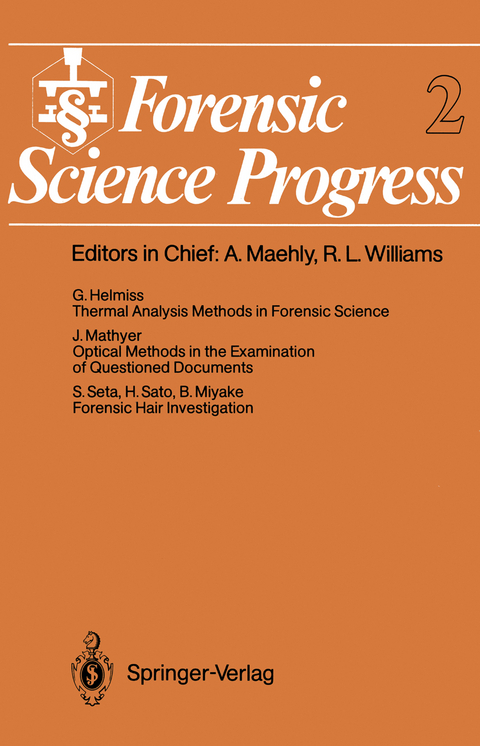
Forensic Science Progress
Springer Berlin (Verlag)
978-3-642-69405-9 (ISBN)
Contents/Information: 'Thermal Analysis Methods in Forensic Science' by G. Hellmiss: This contribution first explains the basics of the measuring process and the type of information obtained by the major TA methods, i.e. differential thermal analysis (DTA)/differential scanning calorimetry (DSC), thermogravimetry (TG), thermomechanical analysis (TMA). The next subject covers forensic science applications of TA. 'Optical Methods in the Examination of Questioned Documents' by J. Mathyer: Optical methods of examination include observations made by the naked eye, and microscopic examination with illumination in the visible or invisible range of the spectrum. 'Forensic Hair Investigation' by S. Seta, H. Sato and B. Miyake: The ultimate purpose of forensic hair comparison is to state whether a crime scene hair is of victim origin or of suspect origin. A combination of morphological and analytical data of hair samples, including hair protein and hair root and isoenzyme analysis leads to the enhancement of identification probability.
| Erscheint lt. Verlag | 19.11.2011 |
|---|---|
| Reihe/Serie | Forensic Science Progress |
| Co-Autor | Günter Hellmiss, Jacques Mathyer, Buntaro Miyake, Hajime Sato, Sueshige Seta |
| Zusatzinfo | IX, 173 p. |
| Verlagsort | Berlin |
| Sprache | englisch |
| Maße | 170 x 244 mm |
| Gewicht | 334 g |
| Themenwelt | Naturwissenschaften ► Chemie ► Analytische Chemie |
| Recht / Steuern ► Strafrecht | |
| Schlagworte | Calorimetry • Enzyme • Fields • Forensic Science • Information • instruments • Protein • Soil |
| ISBN-10 | 3-642-69405-5 / 3642694055 |
| ISBN-13 | 978-3-642-69405-9 / 9783642694059 |
| Zustand | Neuware |
| Haben Sie eine Frage zum Produkt? |
aus dem Bereich


